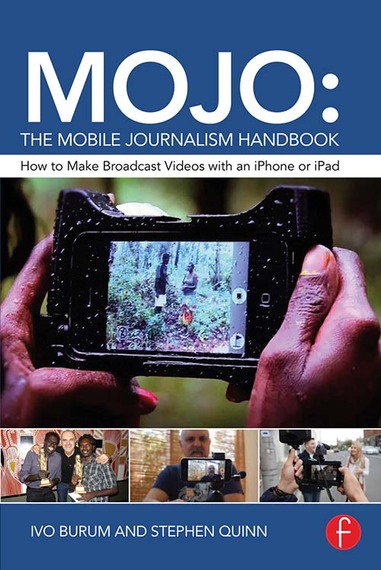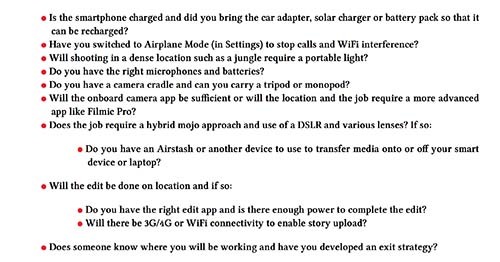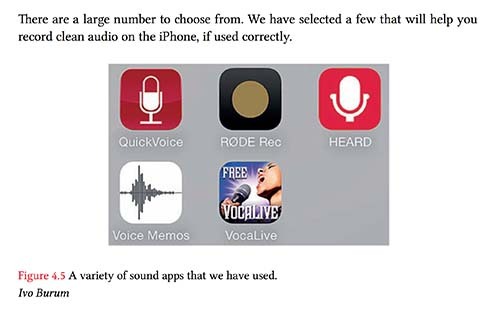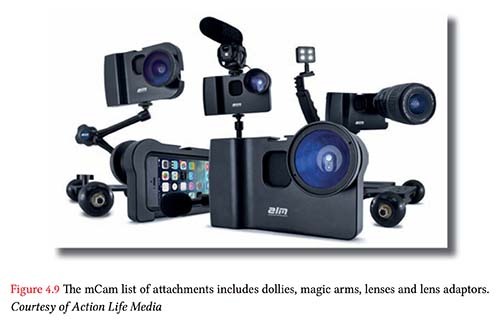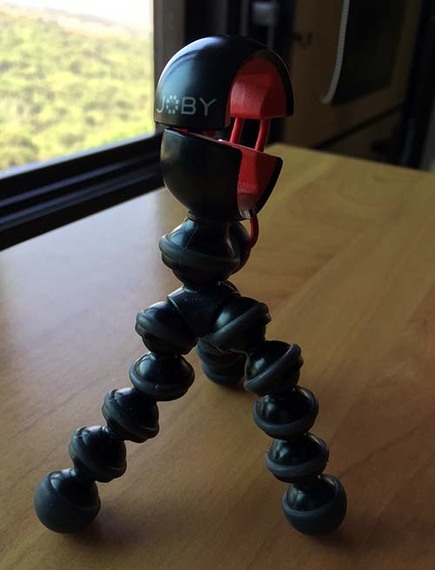It's finally available, to demonstrate how we can all become MOJOs, with a cautionary note that it's not just technical skills that count, but a good basis in journalism.
The "it" is the long-awaited MOJO: The Mobile Journalism Handbook (How to Make Broadcast Videos With an iPhone or iPad) by Ivo Burum and Stephen Quinn published by Routledge, Taylor & Francis Group.
The authors take a neo-journalistic approach to multimedia news, building on the need to base mojo skills around traditional skills. Mojos require what Stephen Quinn calls a multimedia mindset or way of thinking which combines video, audio, text, graphics and stills. And Ivo Burum points out that this multi-planar storytelling approach -- where stories can take a little more time to produce -- also relies on many traditional journalism skills, including editing on a mobile phone.
Quinn and Burum pack a wealth of background information, advice, and references on how to plan and what it takes to collect, sort out, produce, and disseminate content by using portable devices that older journalists could only dream of.
Like with any form of journalism, preparation and doing one's homework are half the battle.
The invaluable tips come in 14 chapters that combine the concept, evolution and practice of mojo, which they describe as a unique form of video making created on a mobile phone that can empower a wide range of people.
Via sophisticated apps, user-generated content (UGC) can be made into user-generated stories (UGS), and these assembled into user-generated programs (UGP). The key is training, and the adoption of an appropriate mindset or way of thinking.
But before delving into the hardware, apps, and skills, I'll fast-forward to Chapter 13 on the "Ethical and Legal Aspects of Mojo" stressing the need to understand privacy, defamation and trespass, and how to stay legally healthy.
Burum and Quinn note that hourly journalism involving social media, online, and mojo videos generate issues, and that the speed with which they are created intensifies them "because by the time we correct an error or apologize for an ethical breach, the story has probably moved on well past the point where those errors or breaches can ever be resolved."
The authors debunk defamation myths, cautioning mojos not to be lulled into a false sense of security by assuming they don't get sued for defamation, only their publications do; that they're safe if they give both sides of the story; and that they're protected if they quote someone else making a defamatory statement.
To avoid defamation, they also advise mojos to ensure all their information is correct, and can be proved -- no small task when content is being churned out 24/7 at beak-neck speed.
According to the book, technology analysts estimate more than 1.4 billion smartphones will ship in 2015, making mobile a game changer, and for large social and media companies a digital cross-screen bridge.
Hence the need for SCRAP, the elements of mojo story telling.
SCRAP is short for story, characters, resolution, actuality and production. It's the equivalent of traditional journalism's 5WH (what, where, when, who, why and how).
"While new platforms can define the style, length and complexity of formats, it's important to recognize that foundation skills still apply," writes Burum, adding that whatever the genre or platform, the smart operator working in a cross-screen digital content ecosphere will need smart skills that include storytelling, program making and an awareness of social media.
Toss in the requisite tools, and you're on your way.
These include a smartphone or other smart device with connectivity, mini directional microphone, lapel microphone, dolly, rechargeable light, lens adaptors, monopod or light tripod, mini tripod, an SD card, and, an account with a phone company and/or Internet service provider (ISP).
What previously required huge bags to lug around can now fit into part of a backpack or a fanny bag at a fraction of earlier costs.
The accessories and attachments help provide high quality video and the authors list a number of options to suit different budgets.
Burum and Quinn, who advise mojos to shoot good sound and visual elements, prefer iPhones for their versatility and user-friendliness, and because a number of iOS editing apps offer two-track video editing, deemed crucial to creating news-like stories quickly.
Breaking news often entails running, being jostled about, interviewing in tight spaces and any number of hindrances to professional quality video, so the authors discuss stabilizing cradles, boombandits, steady-cams, and mono and/or tripods to safeguard the output.
I'm partial to my elastic mini gorilla pod (tripod) that fits into a pocket or a small outer pocket of a handbag and has served me well in interviews. It stretches to fit different model smartphones.
The final chapter provides excellent resources with links to lessons from the BBC Academy on smartphone journalism, tools of the mojo trade, YouTube videos on recording videos, and post-production on a smartphone, to name a few.


